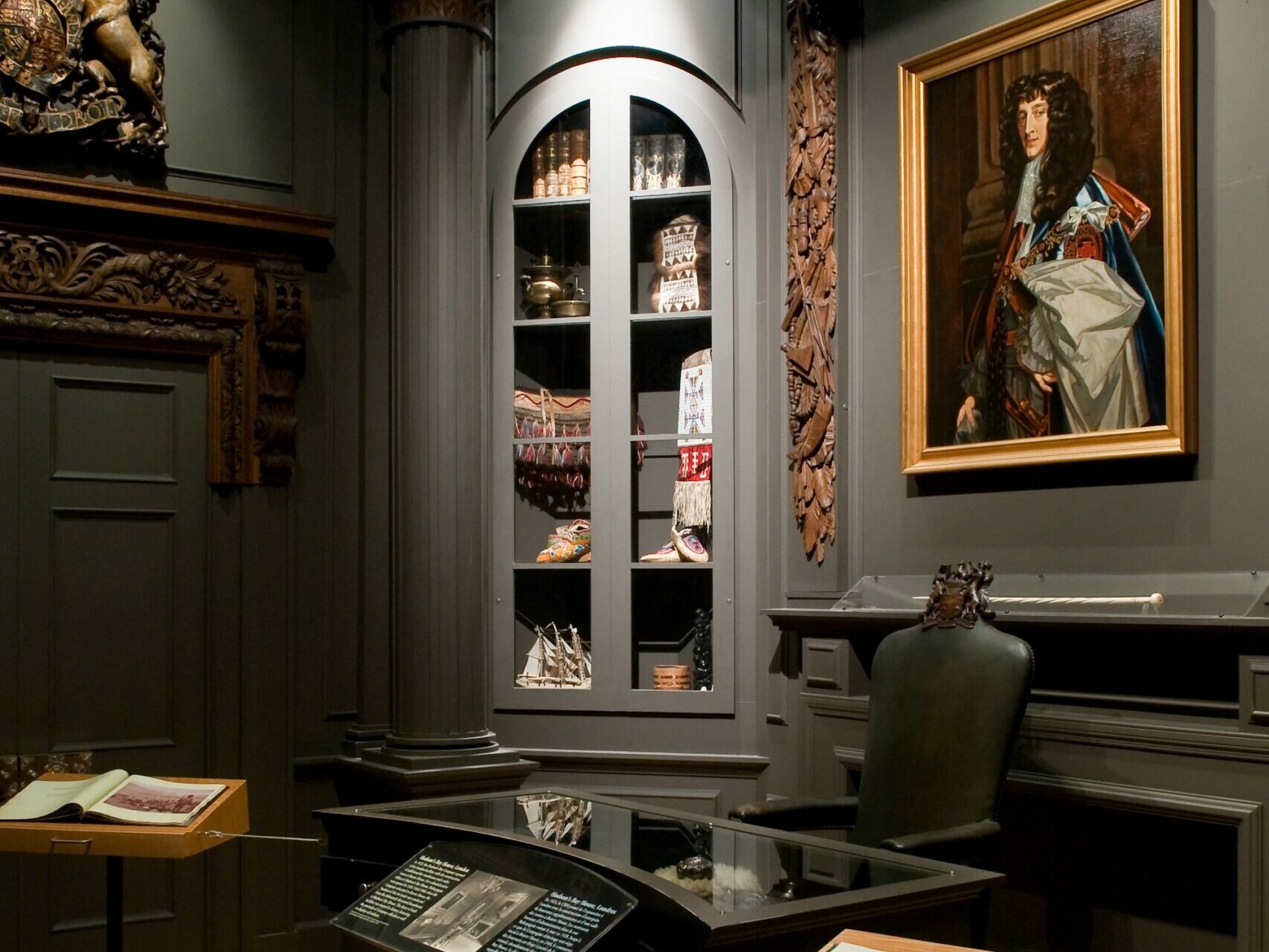Hudson's Bay Company Artifacts And Manitoba's Museum Collections

Table of Contents
The Significance of HBC Artifacts in Manitoba's History
The Hudson's Bay Company's impact on Manitoba is undeniable. From its earliest fur trading ventures to its influence on settlement and economic development, the HBC left an indelible mark on the province. Preserving the artifacts associated with this history is crucial for understanding the complete narrative of Manitoba's past. These artifacts provide tangible connections to pivotal moments and allow us to better comprehend the complexities of this historical period.
-
Role of HBC in shaping Manitoba's economy and society: The HBC's fur trade dominated Manitoba's economy for centuries, shaping its infrastructure, trade routes, and even its social structures. The company's forts served as centers of commerce and governance, profoundly influencing the lives of both Indigenous peoples and European settlers.
-
Impact on Indigenous communities and their relationship with the HBC: The relationship between the HBC and Indigenous communities was complex and multifaceted. Artifacts illuminate this relationship, showcasing both instances of cooperation and conflict. Understanding this interplay is crucial for a complete understanding of Manitoba's history.
-
The evolution of trade and transportation routes facilitated by the HBC: The HBC's extensive network of trading posts and transportation routes connected distant communities and fostered economic growth throughout the region. Artifacts related to transportation—canoes, sleds, and even maps—reveal the ingenuity and resilience required for trade in this challenging environment.
-
Examples of significant historical events connected to HBC presence in Manitoba: The establishment of key trading posts like Fort Garry, the Red River Rebellion, and the eventual transfer of Rupert's Land to Canada are all pivotal moments deeply connected to the HBC's presence and documented through surviving artifacts.
Key Manitoba Museums Housing HBC Collections
Several prominent museums in Manitoba house exceptional collections of Hudson's Bay Company artifacts, offering diverse perspectives on the company’s impact. These institutions play a vital role in preserving and presenting this historical legacy for future generations.
-
Manitoba Museum: Houses a comprehensive collection of HBC artifacts, encompassing early fur trade tools, clothing, documents, and archival materials illustrating the company's operations and the lives of its employees. [Link to Manitoba Museum website]
-
Canadian Museum for Human Rights (CMHR): While not solely focused on HBC artifacts, the CMHR features exhibits exploring the impact of the fur trade on Indigenous peoples, showcasing relevant artifacts and providing a crucial context for understanding this historical relationship. [Link to CMHR website]
-
Lower Fort Garry National Historic Site: This meticulously preserved HBC fur trading post offers a captivating glimpse into life during the fur trade era, with many original buildings and artifacts on display, providing a unique and immersive experience. [Link to Lower Fort Garry website]
Notable Artifacts and Their Stories
The Manitoba museums' collections contain numerous fascinating Hudson's Bay Company artifacts, each with a unique story to tell.
-
A beaver pelt: A seemingly simple item, a prime beaver pelt represents the heart of the HBC's fur trade. Its quality and preparation speak volumes about the skills of Indigenous trappers and the economic engine of the company.
-
HBC ledger books: These meticulously kept records provide invaluable insights into the company's trading practices, detailing transactions, inventory, and even the names of individuals involved in the fur trade.
-
Indigenous crafts and tools: Artifacts showcasing Indigenous artistry and craftsmanship, created for trade with the HBC, offer a glimpse into the cultural exchange and adaptability of Indigenous communities. These items often combine traditional techniques with European materials or designs.
-
Maps and navigational tools: Maps charting early exploration routes and surveying documents provide visual records of the HBC's expansion across the vast landscape of Manitoba and beyond, revealing the logistical challenges and successes of establishing their trade network.
Preservation and Accessibility of HBC Artifacts
Preserving these fragile Hudson's Bay Company artifacts requires specialized knowledge and resources. Museums employ rigorous conservation methods to safeguard these treasures for future generations, while simultaneously ensuring their accessibility to the public.
-
Challenges of preserving delicate artifacts (e.g., textiles, paper): Factors like light exposure, humidity, and pests pose significant challenges to the long-term preservation of many artifacts. Museums employ specialized techniques and environmental controls to mitigate these risks.
-
The use of modern technology for preservation and digital archiving: Digital imaging, 3D scanning, and online databases allow for the creation of virtual copies of artifacts, enabling wider access while protecting the originals.
-
Public access to museum collections (e.g., online databases, exhibits): Museums are increasingly utilizing digital platforms to make their collections more accessible to a broader audience, allowing researchers and the general public to explore these treasures online.
-
Educational programs and outreach initiatives related to HBC artifacts: Museums actively engage in educational programs and outreach initiatives to share the stories of these artifacts, providing valuable educational opportunities and fostering a deeper appreciation for Manitoba's history.
Conclusion
The Hudson's Bay Company artifacts housed in Manitoba's museums offer an invaluable window into the province's rich and complex history. They illuminate the company’s significant influence on the economy, society, and relationships with Indigenous communities. These collections are not just artifacts; they are powerful narratives that bring the past to life. By preserving and sharing these treasures, Manitoba's museums contribute to a broader understanding of Canada’s heritage. We encourage you to visit these museums and explore the captivating world of Hudson's Bay Company artifacts firsthand. Delve further into the history by exploring online resources and museum websites—discover the stories these remarkable objects hold, and broaden your understanding of Manitoba's legacy. Seek out upcoming exhibits and events focusing on the Hudson's Bay Company and its enduring impact.

Featured Posts
-
 Targets Shift On Dei From Vocal Supporter To Changed Approach
Apr 30, 2025
Targets Shift On Dei From Vocal Supporter To Changed Approach
Apr 30, 2025 -
 Le Chat Di Domani Indagini Sul Caso Becciu E Le Accuse Di Complotto
Apr 30, 2025
Le Chat Di Domani Indagini Sul Caso Becciu E Le Accuse Di Complotto
Apr 30, 2025 -
 Dagskrain I Dag T Hrir Leikir I Bestu Deildinni
Apr 30, 2025
Dagskrain I Dag T Hrir Leikir I Bestu Deildinni
Apr 30, 2025 -
 Channing Tatum And Inka Williams A New Couple Pre Oscars Party Sparks Romance Rumors
Apr 30, 2025
Channing Tatum And Inka Williams A New Couple Pre Oscars Party Sparks Romance Rumors
Apr 30, 2025 -
 Meashat Abryl 2025 Mwed Alsrf Waltfasyl Alkamlt L 13 Mlywn Mwatn
Apr 30, 2025
Meashat Abryl 2025 Mwed Alsrf Waltfasyl Alkamlt L 13 Mlywn Mwatn
Apr 30, 2025
